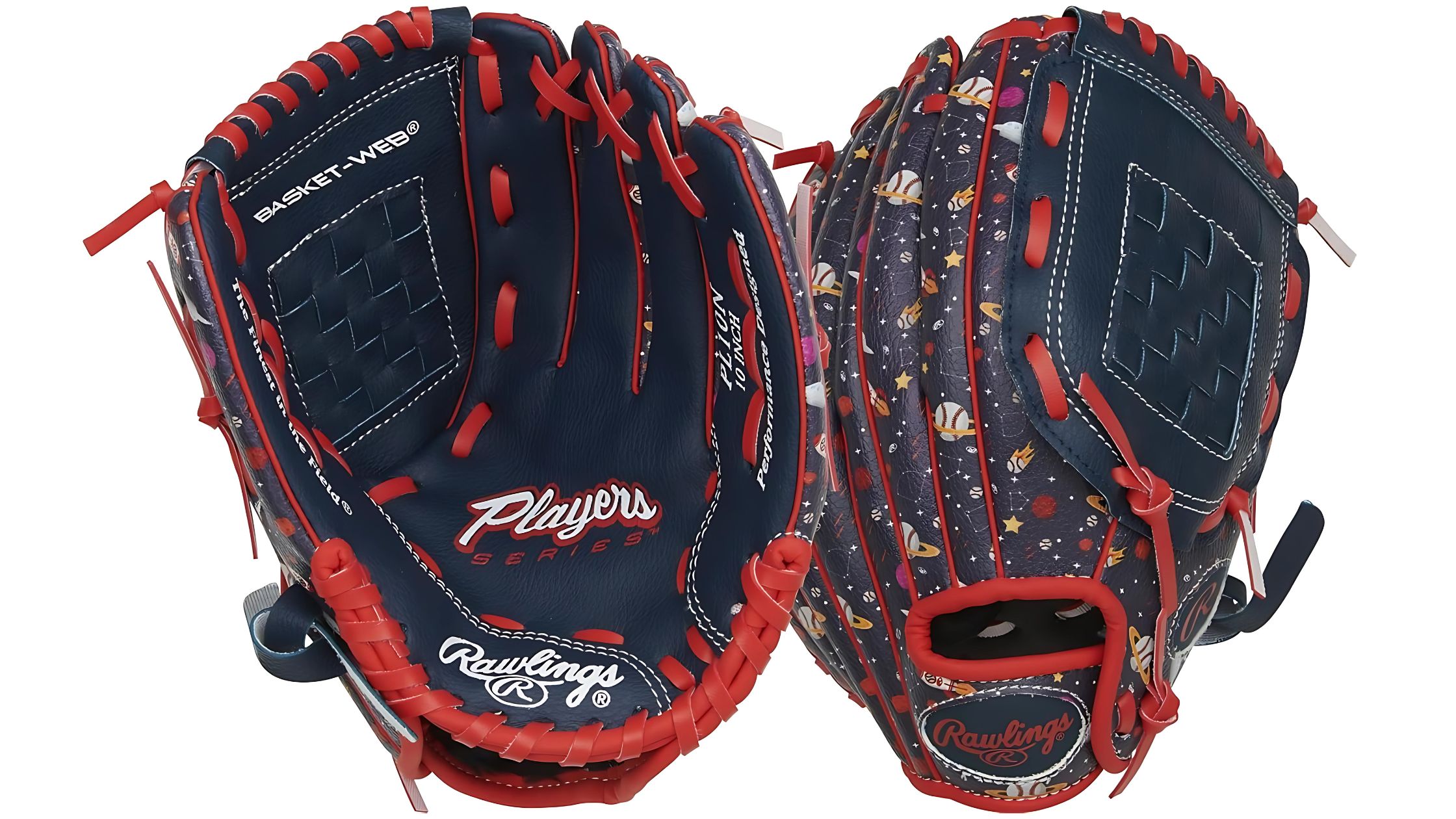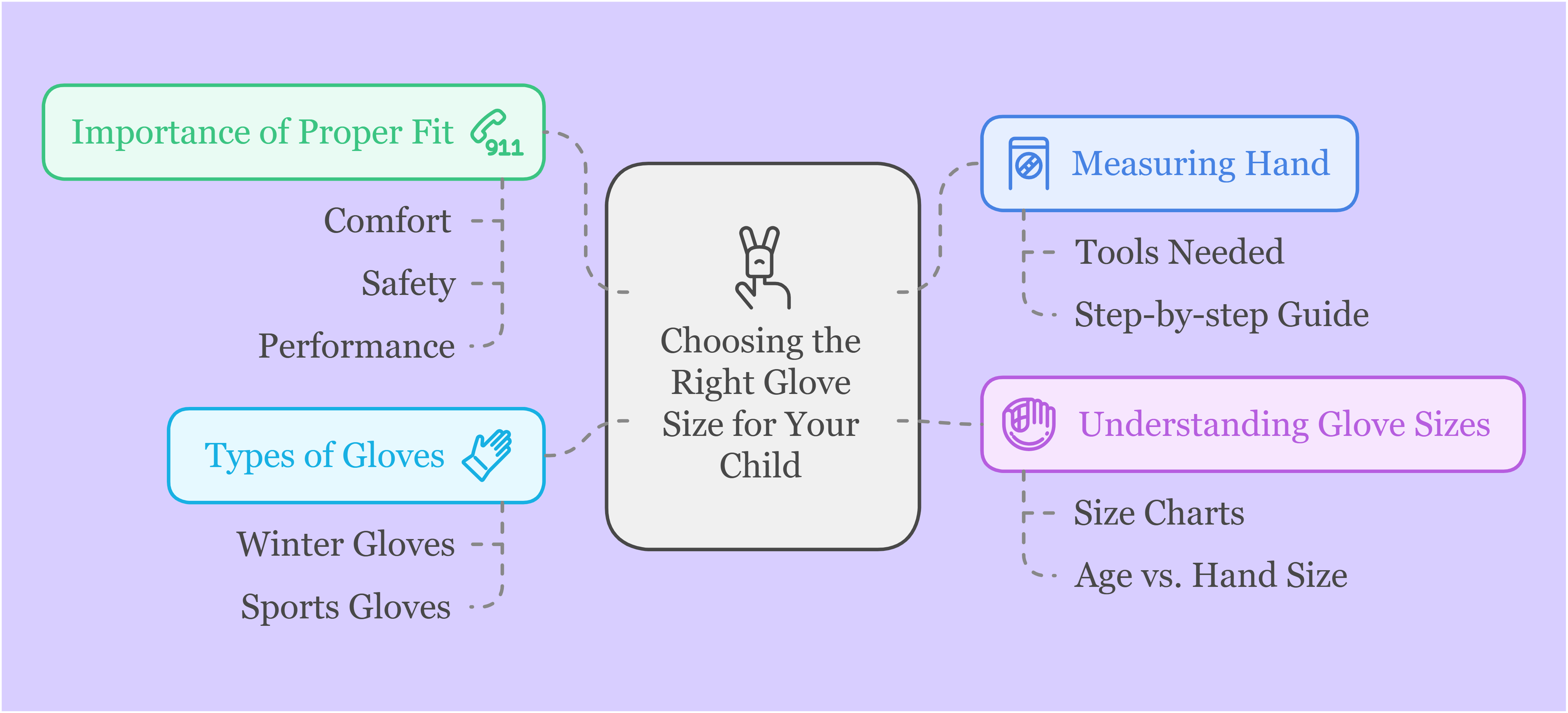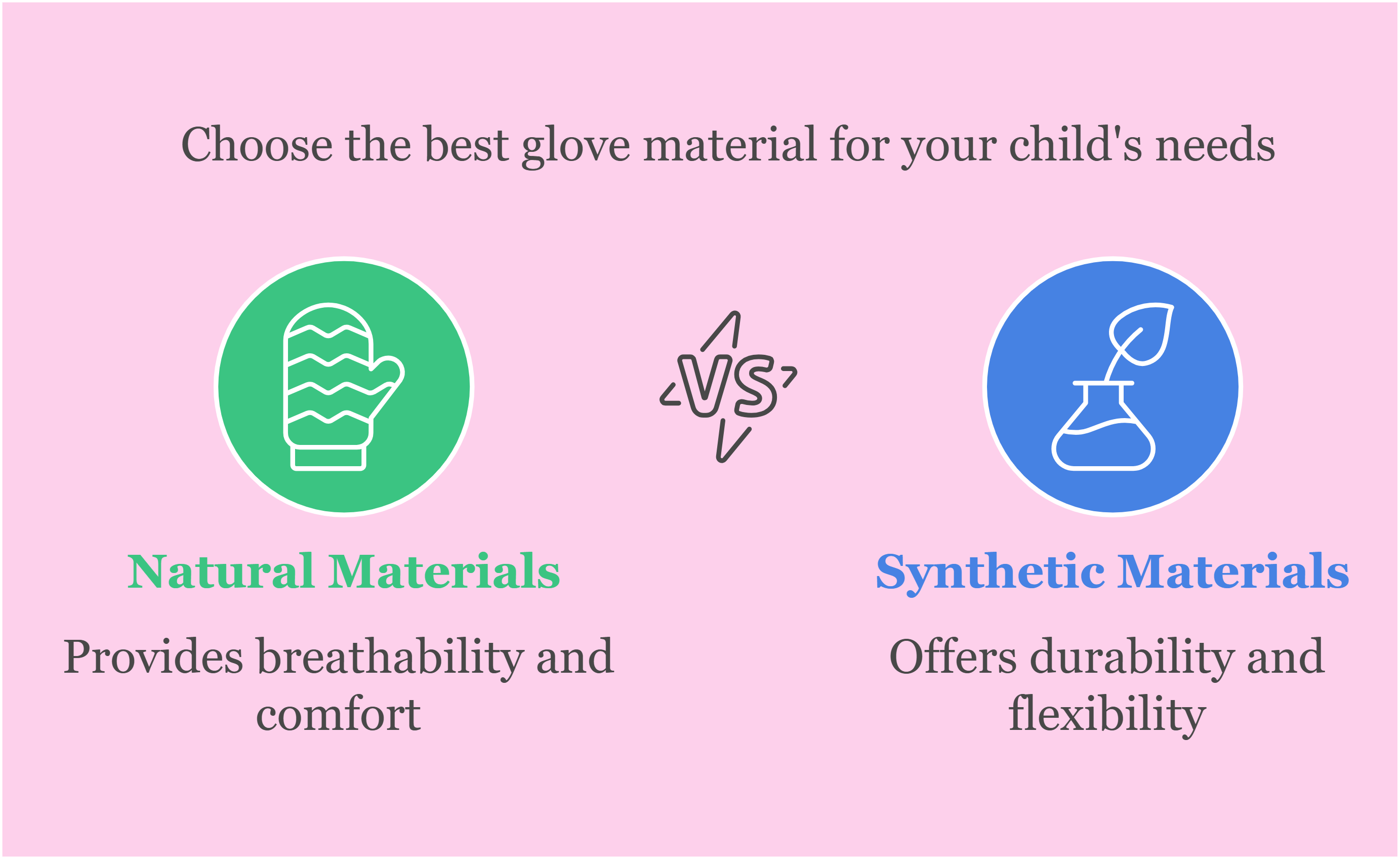Measure your child’s hand from the base of the palm to the tip of the middle finger. Compare the measurement to a sizing chart.To Select the Right Glove Size for Your Child
Choosing the correct glove size for your child ensures comfort and functionality. Ill-fitting gloves can hinder performance and cause discomfort. Accurate measurements are crucial for the perfect fit. Children’s hand sizes vary, so always measure before purchasing. Use a flexible tape measure for best results.
Place the tape at the base of the palm and extend it to the tip of the middle finger. Compare the measurement to the manufacturer’s sizing chart. This method helps you find the ideal glove size, offering both comfort and protection. Properly fitted gloves enhance your child’s experience in activities like sports, gardening, or cold weather play.
Importance Of Proper Fit
Choosing the right glove size for your child is crucial. A proper fit ensures comfort, safety, and optimal performance. Ill-fitting gloves can cause discomfort and hinder your child’s activities. Here, we’ll explore why a good fit is essential.
Comfort And Safety
Gloves that fit well are more comfortable for your child. They won’t slip off or feel too tight. This reduces the risk of blisters and other skin issues. Safety is also a major concern. Gloves that are too loose can cause accidents. Conversely, tight gloves can restrict movement.
Impact On Performance
Properly fitting gloves improve your child’s performance. They can hold objects better and move their fingers freely. This is especially important for sports and activities. Well-fitted gloves also boost confidence. Your child will feel ready to take on any task.

Measuring Your Child’s Hand
Measuring your child’s hand is crucial to selecting the right glove size. Properly fitting gloves ensure comfort and allow for full hand movement. Follow this simple guide to measure your child’s hand accurately.
Tools Needed
- Measuring tape or a ruler
- Pen or pencil
- Paper
Step-by-step Guide
- Prepare the hand: Ask your child to spread their fingers wide.
- Measure the palm: Place the tape or ruler across the widest part of the palm. Record the measurement in inches or centimeters.
- Measure the length: Measure from the tip of the middle finger to the base of the hand. Write down this measurement too.
- Compare measurements: Use a sizing chart to find the right glove size based on the measurements.
| Measurement (inches) | Glove Size |
|---|---|
| 4-5 | Small |
| 5-6 | Medium |
| 6-7 | Large |
Ensure you measure both hands as they might differ slightly. Repeat these steps regularly as children grow quickly. A well-fitted glove enhances your child’s comfort and performance.
Understanding Glove Sizes
Choosing the right glove size for your child is important. The right fit ensures comfort and warmth. Understanding glove sizes can seem complex. But with a little guidance, it becomes simple. Let’s break down the essentials.

Size Charts
Size charts help you find the perfect glove size. These charts convert measurements into easy-to-understand sizes. Use a measuring tape to measure your child’s hand. Wrap it around the widest part of the palm, not including the thumb.
Here is a common size chart for children’s gloves:
| Hand Measurement (in inches) | Glove Size |
|---|---|
| 4 – 4.5 | Small |
| 4.5 – 5 | Medium |
| 5 – 5.5 | Large |
Use this chart as a guide. Measure your child’s hand and find the corresponding size.
Age Vs. Hand Size
A child’s age does not always match hand size. Children grow at different rates. A 5-year-old may need a different size than another 5-year-old.
Here are some general guidelines:
- Age 3-4: Small (4 – 4.5 inches)
- Age 5-6: Medium (4.5 – 5 inches)
- Age 7-8: Large (5 – 5.5 inches)
Always measure your child’s hand for the best fit. Age is just a starting point. Hand size gives you the exact measurement. This ensures the gloves fit comfortably and provide warmth.
By understanding glove sizes, you can easily find the right fit for your child. Use size charts and measure hands accurately. This way, your child will have gloves that fit perfectly.

Types Of Gloves For Children
Choosing the right glove size for your child is essential. The perfect fit ensures comfort and protection. There are various types of gloves for different activities and seasons.
Winter Gloves
Winter gloves keep your child’s hands warm and dry. They are made from different materials like wool, fleece, and synthetic fibers. Wool gloves are great for mild cold. Fleece gloves are soft and comfy. Synthetic gloves offer the best insulation. Ensure they are waterproof to keep hands dry.
| Type | Material | Best Use |
|---|---|---|
| Wool Gloves | Wool | Mild Cold |
| Fleece Gloves | Fleece | Comfort |
| Synthetic Gloves | Polyester | Extreme Cold |
Sports Gloves
Sports gloves protect your child’s hands during activities. Different sports need different gloves. Soccer gloves have padding for goalkeepers. Baseball gloves are leather and have pockets to catch balls. Cycling gloves provide grip and reduce hand fatigue. Ensure the gloves fit snugly and provide good grip.
- Soccer Gloves: Padding for goalkeepers.
- Baseball Gloves: Leather with pockets.
- Cycling Gloves: Good grip and reduce fatigue.
Choosing the right gloves ensures your child stays safe and comfortable. Always check the size chart before purchasing.
Materials And Their Stretch
Selecting the right glove size for your child depends on the material. Different materials have different levels of stretch. This affects how well the glove fits. Knowing the difference between natural and synthetic materials helps in choosing the perfect fit.

Natural Vs. Synthetic
Gloves come in both natural and synthetic materials. Each has its own benefits.
- Natural materials like cotton and wool are breathable and comfortable. They stretch naturally to fit the child’s hand.
- Synthetic materials like polyester and nylon offer durability. They are more resistant to wear and tear but might be less stretchy.
Choosing the right material depends on your child’s activities. For daily use, natural materials work well. For sports, synthetic gloves are better.
Breathability And Flexibility
Breathability and flexibility are crucial for comfort. Gloves need to allow air to circulate. This prevents your child’s hands from getting too sweaty.
| Material | Breathability | Flexibility |
|---|---|---|
| Cotton | High | Medium |
| Wool | Medium | High |
| Polyester | Low | Medium |
| Nylon | Low | High |
Natural materials usually offer better breathability. Synthetic materials provide more flexibility but might not be as breathable. Think about the weather and your child’s activities before choosing.
Trying Gloves On
Trying gloves on is crucial to finding the right fit for your child. A well-fitted glove ensures comfort and functionality. Let’s explore the steps to check the fit and signs of a good fit.
Checking The Fit
To begin, have your child try on the gloves. Make sure they are wearing the correct hand. Ask your child to open and close their hands. This will help you see if the gloves are too tight or too loose.
Pay attention to the fingers. Each finger should fit snugly into the glove. There should be no extra space at the tips. The glove should not pinch or restrict movement.

Signs Of A Good Fit
There are several signs to look for in a well-fitted glove. Use the table below for a quick reference.
| Signs | Description |
|---|---|
| No Pinching | The glove should not pinch any part of the hand. |
| Snug Fit | The glove should fit snugly without being too tight. |
| Full Range of Motion | Your child should move their fingers freely. |
| Proper Finger Length | Each finger should fill the glove without extra space. |
If the gloves meet all these signs, you have found the right size. A good fit ensures your child’s comfort and safety while wearing gloves.
Adjustable Features
When choosing the right glove size for your child, adjustable features make a significant difference. These features ensure the gloves fit snugly and comfortably. Two important adjustable features are Velcro straps and elastic cuffs.
Velcro Straps
Velcro straps are very useful in adjusting glove size. They allow you to tighten or loosen the gloves easily. This means the gloves can grow with your child’s hands. Velcro straps also help keep the gloves secure. This prevents them from slipping off during play.
Elastic Cuffs
Elastic cuffs provide a flexible fit around the wrist. They stretch to fit different wrist sizes. This ensures the gloves stay in place. Elastic cuffs also offer a bit of stretch, making them easy to put on and take off. This is especially helpful for young kids who dress themselves.
| Feature | Benefit |
|---|---|
| Velcro Straps | Easy to adjust and secure fit |
| Elastic Cuffs | Flexible fit and easy to wear |
Both Velcro straps and elastic cuffs add to the comfort and usability of the gloves. They ensure a good fit, making sure your child enjoys their outdoor activities.

Common Mistakes To Avoid
Choosing the right glove size for your child is crucial. Many parents make common mistakes that lead to discomfort and wasted money. Here’s what you need to know to avoid these pitfalls.
Ignoring Growth Spurts
Children grow quickly. It’s easy to overlook this when buying gloves. Buying gloves that fit perfectly now might mean they won’t fit in a few months. Always consider a size up to accommodate growth spurts.
| Age Group | Average Growth Rate |
|---|---|
| 2-4 years | 2 inches per year |
| 5-7 years | 1.5 inches per year |
| 8-10 years | 1 inch per year |
Overlooking Material Quality
The quality of the glove material impacts comfort and durability. Cheaper materials can cause skin irritation. They also wear out faster. Look for gloves made from breathable, durable materials.
- Cotton: Soft, breathable, ideal for sensitive skin.
- Wool: Warm, suitable for cold weather but can be itchy.
- Synthetic blends: Durable, often water-resistant, but less breathable.
These tips will help you choose the right size and material. Your child will stay comfortable and enjoy their activities more.
Frequently Asked Questions
How Do I Measure My Child’s Hand For Gloves?
To measure your child’s hand, use a measuring tape around the knuckles. This will give you the hand’s circumference, which is crucial for selecting the right glove size.
What If My Child’s Hand Falls Between Sizes?
If your child’s hand falls between sizes, opt for the larger size. This ensures comfort and room for growth, avoiding tightness.
Are Glove Sizes The Same For All Brands?
No, glove sizes can vary between brands. Always refer to the specific brand’s sizing chart to ensure an accurate fit for your child.
How Should Gloves Fit A Child?
Gloves should fit snugly but not too tight. There should be enough room for fingers to move freely without excess material at the tips.
Conclusion
Choosing the right glove size for your child ensures comfort and protection. Measure their hands carefully and check size charts. Prioritize quality materials for durability. Properly fitted gloves enhance their activities and keep them safe. Follow these tips, and your child will enjoy their gloves for any adventure.


